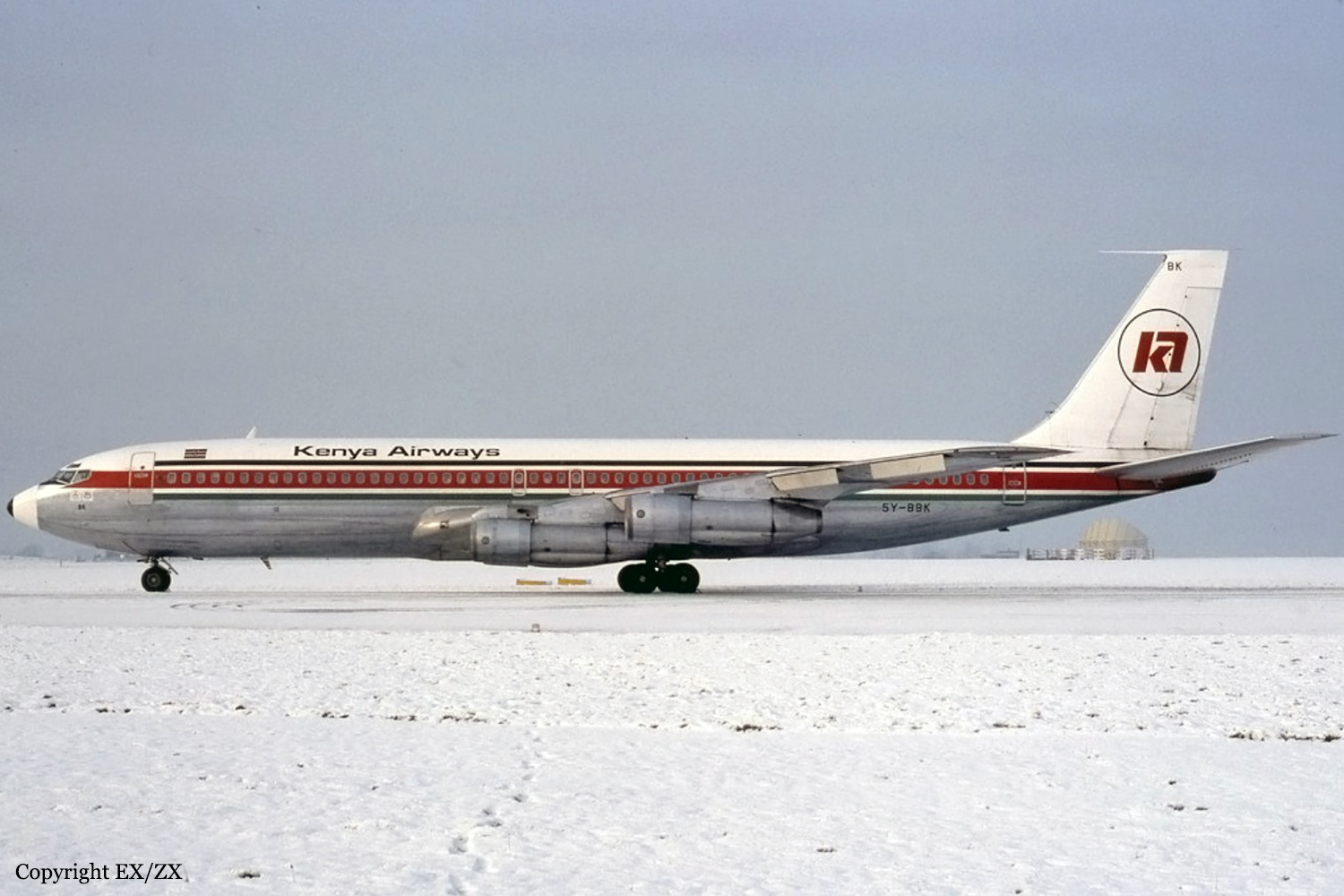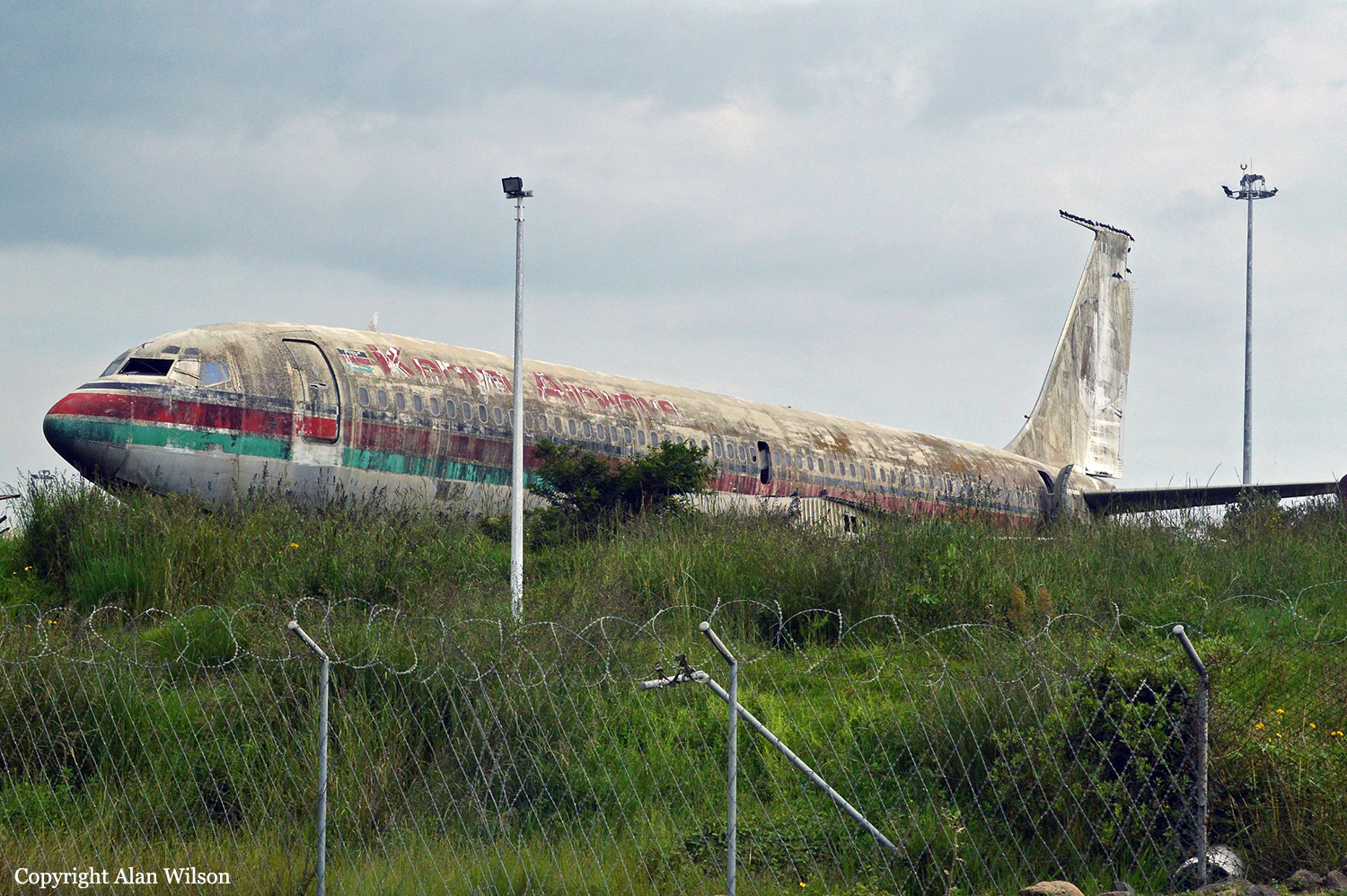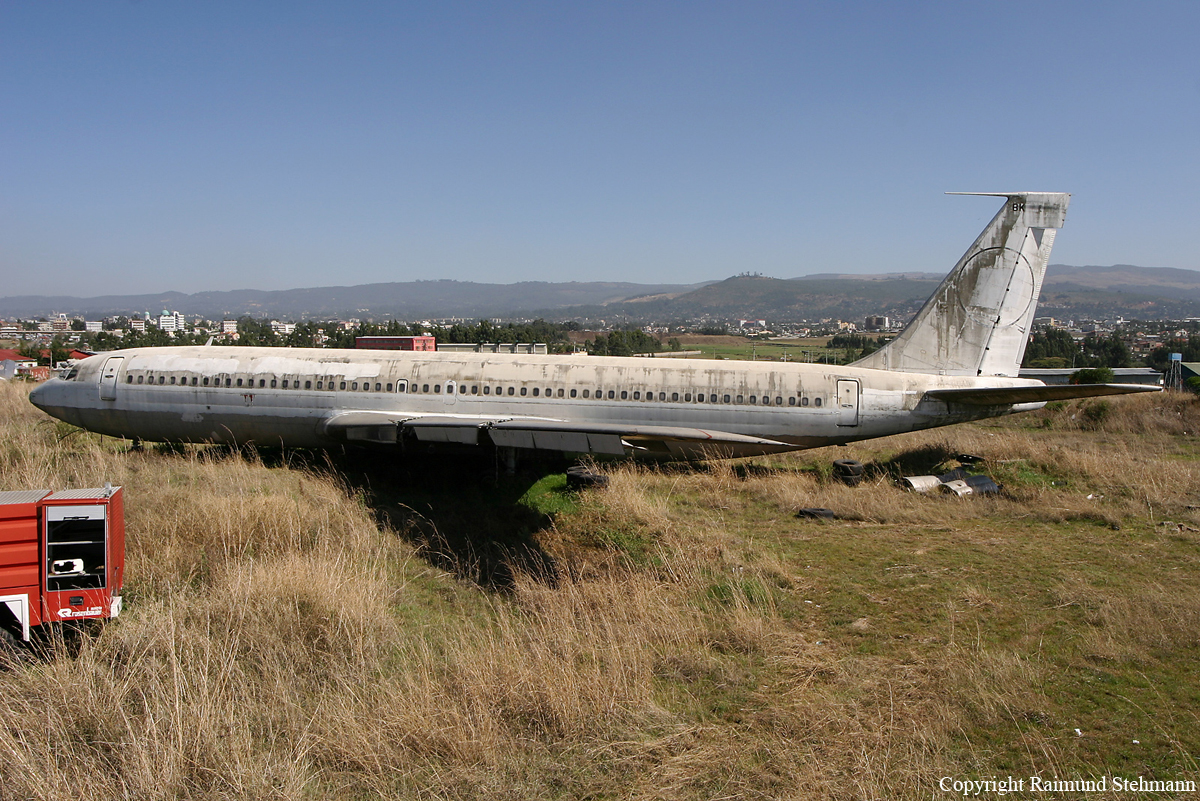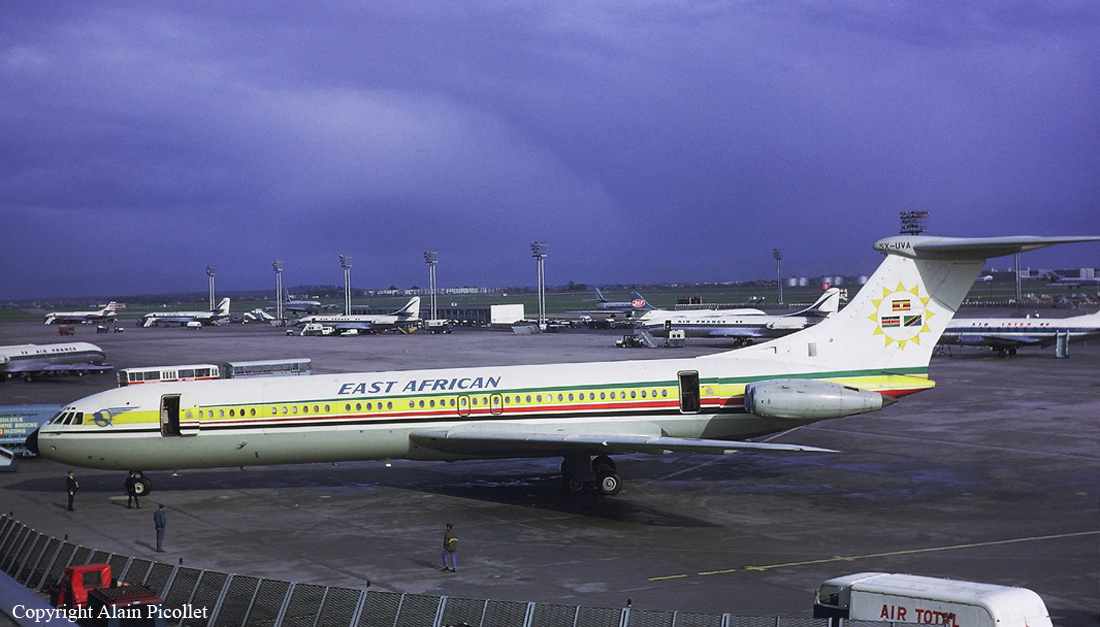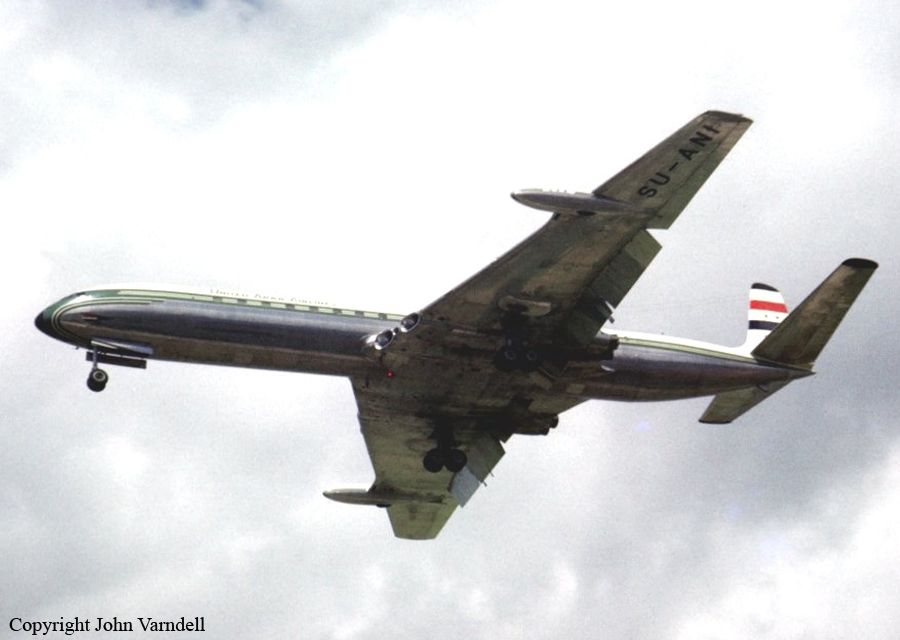Crash of a Boeing 707-351B in Addis Ababa
Date & Time:
Jul 11, 1989
Registration:
5Y-BBK
Survivors:
Yes
Schedule:
Addis Ababa - Nairobi
MSN:
19872
YOM:
1968
Crew on board:
10
Crew fatalities:
Pax on board:
66
Pax fatalities:
Other fatalities:
Total fatalities:
0
Circumstances:
After takeoff from Addis Ababa-Bole Airport, while climbing, the crew encountered technical problems with the undercarriage that could not be raised. Decision was taken to return for a safe landing but after touchdown, due to the malfunction of the hydraulic systems, the aircraft was unable to stop within the remaining distance. The aircraft overran, lost its undercarriage and came to rest. All 76 occupants were evacuated, among them six passengers were slightly injured. The aircraft was damaged beyond repair.
Probable cause:
Failure of the hydraulic systems for unknown reasons.
